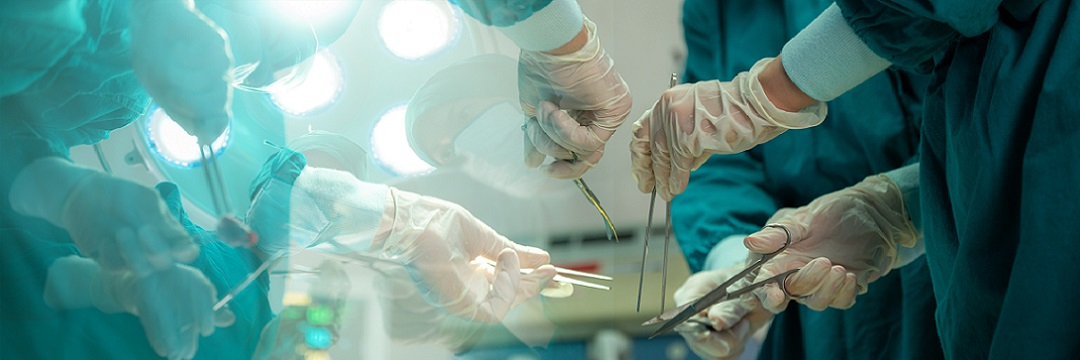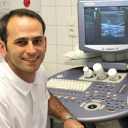
More than half of the female population of the planet experience discomfort in the mammary gland area at some period of their lives. Heaviness, sense of pain, as well as appearance of suspicious lumps are the signs of the disease called mastopathy. It is benign in character, but under certain circumstances it can develop into a malignant process.
What is it about?
Mastopathy (also called “mammary dysplasia”) is a benign breast disorder with changes in the glandular breast tissue. It occurs mostly in women between the age of 30 and 50.
A characteristic feature of this abnormal condition is that its typical complaints occur depending on the phase of the menstrual cycle. This is manifested, for example, by swellings, cyst formation, or pain in the breasts. Often, shifting pea-sized nodules are felt in the breasts. Almost always mastopathy occurs on both sides, much less often on one side. Symptoms intensify about a week before menses and disappear after it is over. Hormonal imbalance is considered to be a the cause of mastopathy.
Mastopathy occurs mostly in women of childbearing age. As a rule, it develops during puberty up to the beginning of menopause, mostly between 30 and 50 years of life. Women under the age of 25 or after menopause rarely suffer from the disease.
Doctors distinguish several forms of mastopathy.
Certain types of mastopathy significantly increase the risk of developing breast cancer. Therefore, women affected by the condition should regularly visit a doctor and undergo examinations.
If mammary dysplasia is suspected, one should seek an appointment with a breast care provider or a gynecologist.
Mastopathy types
According to the generally accepted classification, fibrocystic mastopathy can be diffuse or nodular. Each of these two types includes several varieties. Their features determine the disease course, risks, and treatment approaches.
In diffuse mastopathy, changes occur in the entire gland, often on both sides. Depending on their nature, specialists distinguish between different variants:
- fibrous (mastopathia fibrosa): characterized by an overgrowth of connective tissue lining the ducts of the gland from the inside, which replaces the thin layer of epithelium.
- сystic (mastopathia cystica): increased growth of the glandular cells, which results in the production of a large amount of fluid, leading to the formation of multiple small cysts.
- fibrous cystic (mastopathia fibrosa cystica): a mixed form that occurs most often. Both connective tissue cells and glandular cells multiply too much. Therefore, examinations reveal both cysts and lumps.
- fibroadenomatous (mastopathia fibroadenomatosa): characterized by tumor-like overgrowth of glandular cells (adenomatous hyperplasia) in the gland ducts, which can be filled with blood, pus, or secretion.
Nodular mastopathy are single benign masses, which can represent intraductal papillomas, lipomas, lipogranulomas, localized fibroadenomatosis (fibroadenomas). Compared with the diffuse variant, it is considered less favorable.
Factors causing fibrocystic breasts
The main cause of mastopathy is hormonal disorder, i.e., an imbalance between the hormones estrogen and progesterone responsible for regulating the menstrual cycle. Often estrogen levels are too high because of its excessive production in the body, or because of insufficient progesterone secretion. Excess estrogen can lead to the development of benign changes in the glandular tissue of the breast.
Increased production of the hormone prolactin or androgens (male sex hormones) can also cause estrogen levels to rise.
Estrogen overproduction may equally cause thyroid dysfunction with a decrease in blood levels of its hormones.
Certain drugs, such as antidepressants, or digitalis (used to treat some heart diseases), can lead to a similar situation.
Developmental factors
Health care specialists see the following circumstances as contributors to the development of mastopathy in this or that form:
- early menarche;
- late menopause;
- abortions;
- lack of pregnancies;
- giving up breastfeeding;
- metabolic disorders (obesity, diabetes);
- frequent stresses;
- endocrine system disorders;
- liver diseases;
- inappropriate use of hormone therapy drugs;
- genetic predisposition;
- infertility;
- late sexual debut;
- frequent inflammation of the genitalia.
In principle, mastopathy is not considered a dangerous disease. Only very seldom (0.1-0.3% of all cases) it can undergo transformation into a malignant condition. Therefore, mastopathy as such is not a threat from the point of view of breast cancer development. However, the third-grade mastopathy increases the risk of its development by several times.
Mastopathy symptoms
Mastopathy symptoms depend on the menstrual cycle: they increase before menstruation and decrease during its course.
Typical signs of mastopathy include:
- A feeling of tension and pain in the breasts: about a week before the start of menstruation, patients affected by mastopathy feel their breasts swell up. This is accompanied by a feeling of tension or pain in the breasts (mastodynia). These manifestations are most pronounced in the second half of the cycle and in the majority of cases go away when menstruation begins.
- Mammary gland nodules: scattered, palpable as fine or coarse lumps, or as nodules, form in the breast tissue. They are especially noticeable in the breast area between the axillary region and the clavicle. The size of these lumps or nodules varies according to the phase of the cycle: they are especially pronounced in the second half of the cycle and decrease as menstrual bleeding begins. The nodes are often sensitive when pressed and palpated.
- Nipple discharge: in some cases, nipples secrete clear or bloody fluid. More often it does not effuse on its own, but is discharged when the breast is pressed.
Mastopathy usually appears on both sides, rarely unilaterally.
The complaints are often localized in the upper external part of the breast. At the same time, the symptoms can have varying degrees of severity and change over time.
Disease severity grades
Generally accepted is a three-grade classification of mastopathy, depending on the severity of changes in the breast tissue. Depending on their manifestation, specialists estimate the possible risks of breast cancer.
- Grade I: Simple mastopathy, where the connective tissue is only slightly altered, the milk ducts are dilated, and cysts may be present. The likelihood of developing breast cancer in this case is extremely low. This form of mastopathy occurs in about 70% of cases.
- Grade II: A simple proliferating mastopathy in which benign cell overgrowths are found in the milk ducts. This mastopathy grade occurs in about 20% of all cases. The risk of developing breast cancer is rated as slightly increased.
- Grade III: Specialists refer to it as an atypical progressive mastopathy, which is also accompanied by overgrowth of the milk duct system. The cellular changes are painful (atypical). About 10% of all mastopathies fall into this category. Approximately one third of women with such variant of mastopathy develop multiple masses on both sides of the breast. Risk of breast cancer in Grade III mastopathy is considered to be elevated. If there is a family history, it increases by 2.5-4 times.
Grade III mastopathy requires regular medical observation and close monitoring.
Mastopathy diagnosis
If mastopathy is suspected, the health care provider will first of all collect all details about the medical history (anamnesis) and carefully palpate the mammary glands. This can immediately identify typical changes in them. However, as a rule, it is not enough. It is important to differentiate mastopathy from breast cancer, fibroadenoma, premenstrual syndrome or other condition.
The following types of examinations are aimed at mastopathy diagnosis:
- Breast ultrasound: helps assess nodular changes in the breast.
- X-ray of the mammary glands (mammography): makes it possible to study the detected lumps and nodules.
- Needle biopsy. If single cysts are found in the breast, those can be punctured with the purpose of examining the tissue samples at the cellular level (histology). However, this type of examination is not commonly used for mastopathy. As a rule, biopsy is used to rule out a malignant process.
- Mammary gland MRI (magnetic resonance imaging) is recommended in doubtful cases to exclude breast carcinoma.
In rare cases, nipple discharge is examined.
If there is bloody nipple secretion, galactography, a study of the milk ducts with a contrasting substance injected through the nipple, is prescribed for differential diagnosis.
Mastopathy management
In most cases, mastopathy does not need any special treatment. There are no ways to treat and prevent mastopathy itself. Breast care provider prescriptions are aimed first of all at relieving complaints, mainly pain sensations, as well as restoring the balance between estrogen and progesterone levels. With this purpose, gestagen-containing drugs are used either in the form of creams to be rubbed in, or in the form of pills.
In some cases, nonsteroidal anti-inflammatory medications and analgesics are prescribed for pain relief.
Also, various drugs derived from plants can be used for this purpose, which stimulate the production of gestagens. The example of such natural medicines is Abraham's balm (vitex agnus-castus).
As a supplement, vitamin complexes, trace substances, homeopathic medicines can be prescribed.
Patients are strongly encouraged to revise their lifestyle and eating habits, as well as select the appropriate underwear.
Home remedies such as hibiscus and sage teas also help to relieve the discomfort. They have a diuretic and anti-inflammatory effect and help reduce tissue swelling.
Women suffering from mastopathy are encouraged to take care of their diet. First of all, one should avoid large amounts of salt and caffeine, sugar, and fats.
It is only in rare cases of mastopathy that surgical removal of lumps and cysts becomes necessary. Decisions about surgical treatment are always individual.
Indications for mastopathy surgery are as follows:
- Breast deformation due to lumps;
- Constant formation of new nodes;
- Breast cancer fears;
- Persistence of symptoms during menopause;
- Pregnancy planning.
Together with mastopathy management, treatment of the underlying disease, which caused the hormonal imbalance leading to abnormal tissue structure changes, is administered upon necessity.
Second opinion
A second opinion is an opportunity to get a consultation with leading European breast care specialists without leaving home. All issues are taken care of at a distance. The expert selection is based on individual complaints and existing diagnosis. This way it becomes possible to refer the case to the doctor who has the largest experience in a particular field.
In the case of mastopathy, a second opinion can be needed while determining the diagnosis, if the patient has doubts regarding the suggested examination plan. Besides, the consulting provider can review the diagnostic findings and make relevant conclusions.
After a mastopathy diagnosis has been made, an expert second opinion is also important. It may help to find out whether the treatment strategy has been chosen correctly, i.e., if the recommended procedures really make sense.
External advice may also be helpful as soon as the therapy is completed. It will help to make an effective rehabilitation and follow-up plan to prevent the relapse of the disease.
References
- Mastopathy. Histological forms and long-term observations, K Prechtel, 1991.
- Mastopathy--its hormonal conditions and therapy, A Warenik-Szymankiewicz, 1992.
- Endocrinological aspects of fibrocystic mastopathy, A Angelia, 1982.


Comments — 0